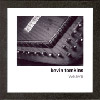Kevin Tomkins, "Weave"
 While the previously released (and reviewed) Perfectly Flawed disc demonstrated the variety of sounds that can be generated using only an Autoharp, here the Sutcliffe Jugend/Inertia (and former Bodychoke) member takes the approach to an almost Quixotic level: 17 full length discs using only the same instrument, recorded in a limited number of sessions. While some near 17 hours of autoharp music may sound daunting, Tomkins takes enough variation in his approach, both physically and conceptually, to deliver a vastly different array of sounds.
While the previously released (and reviewed) Perfectly Flawed disc demonstrated the variety of sounds that can be generated using only an Autoharp, here the Sutcliffe Jugend/Inertia (and former Bodychoke) member takes the approach to an almost Quixotic level: 17 full length discs using only the same instrument, recorded in a limited number of sessions. While some near 17 hours of autoharp music may sound daunting, Tomkins takes enough variation in his approach, both physically and conceptually, to deliver a vastly different array of sounds.
The story of this release (outlined in the accompanying booklet) is that Tomkins bought an old and ragged autoharp from a yard sale one day and began experimenting with it, without tuning or restringing the instrument. At the eve of a Sutcliffe Jugend show, his musical partner Paul Taylor had to pull out and, in an attempt to flesh out a live show alone, Tomkins discovered that layering loops of autoharp made for a good backing track. The early experiments of this appear in this set, along with a great deal of newer material.
Limited to 20 copies in the first edition, the 17 discs that make up this set are all individually sleeved and titled to roughly give an indication of what is contained within. Both Some Have Patterns and Slow Patterns, for example, are largely rhythmic loop-based recordings that build upon Spartan loops that become more and more complex as the tracks progress. Bow is more of a concrete title, consisting of all pieces in which Tomkins plays the autoharp with a violin bow, giving more of a sustained strings characteristic to the sound, hinging on slow drawn out notes and subtle building in layers and duration.
Other discs are not labeled as much for their structure as it is for the feeling and emotions that went in to creating them. Manic, for example, is some 66 minutes of frantic string plucks, crazed notes, and schizophrenic attempts at playing the instrument. While the sound remains relatively calm, the playing style is the equivalent of the manic fury most have come to expect from the artist, though here in a more stripped down context.
It would be remiss if Tomkins didn’t cater at least somewhat to the fans from the earlier Sutcliffe Jugend days, and though he has done quite a bit to show there is a lot more to his work than just brutality, he’s just like the rest of us and still likes to crank the noise once in awhile. Into Noise are slower developing tracks of low end drone that build and swell across each of the three tracks into sustained roars recalling Hermann Nitsch’s aktion based symphonies, and Noise begins by pegging the overdrive to the max, the volume up so loud to almost obscure the autoharp’s characteristic tones under thick roars. Rather than just staying with this approach, there are tracks of percussive and looped passages that give the rhythmic thump of classic death industrial, and other scraping and slicing tones that could be from the best of the slasher films.
For most of this set, the post-performance processing and multitracking was kept to a minimum, most of the material was recorded live using only effects and loop pedals. The final two discs of the set are the exception to this rule, as they are constructed from pieces and samples of the previous material. Rewoven (Light Weave) is the lighter of the two discs, cutting up fragments of notes into near traditional rhythms, resembling so-called "electronica" to some extent before ending with vast ambient space. The counterpoint Rewoven (Dark Weave) is the processed sounds from before built into dark ambient space: the opening pieces are slow funeral drone and quiet, dark and reflective tones. The closing segment is really a culmination of the near 16 hours that preceded it: a 40 minute piece of violent roar, restrained noise, and thick ambience.
Sure, it has to be said that at 17 discs, this is a somewhat excessive and indulgent set. However, each disc has enough variance in sound and style to let them stand on their own and not sound unnecessary or repetitive. Listening to them back to back or even in close succession is a bit too daunting of a task but spread out or treated individually, each disc represents a variation of the pathological study of a single instrument. It would probably be best for most to check out the single Perfectly Flawed disc first, but if that grabs others like it did me, this set should be sought out immediately afterwards.
samples:



